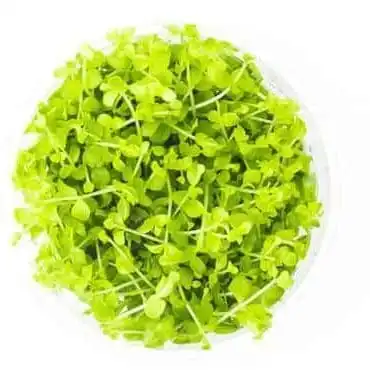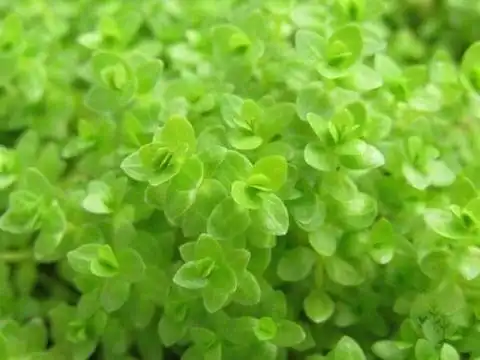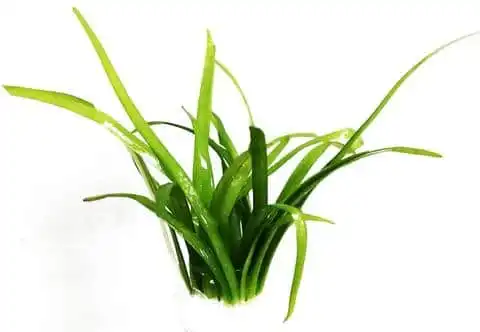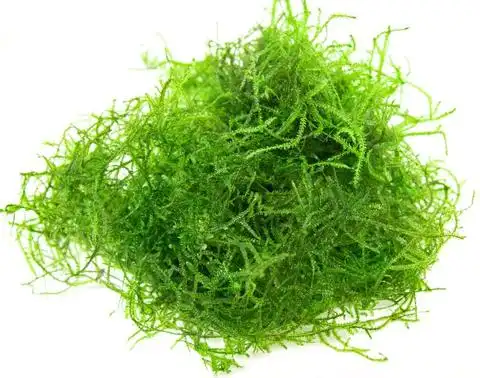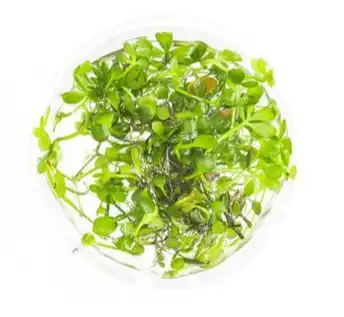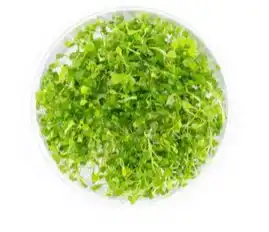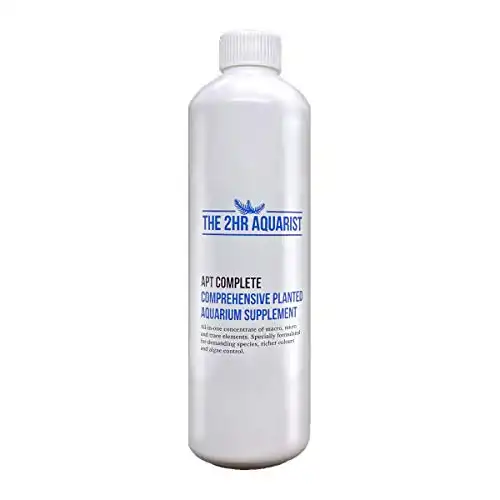Thank you for visiting! By the way… any links on this page that lead to products on Amazon and other stores/partners are affiliate links Aquarium Store Depot earns a commission if you make a purchase.
An aquarium with a green carpet of living plants is one of the most impressive sights in the hobby. Many new aquarists think achieving this look is too advanced for them, but the truth is that anyone can grow aquarium carpet plants with the right knowledge and equipment.
In this article, I’ll introduce the 11 best carpeting plants that you can grow in your aquarium and teach you the basics on how to grow and maintain them too. So let’s dive right in!
What Are Carpeting Plants?
Have you ever seen an aquascaped aquarium that has a floor covered in dense green foliage? The plants used to create this effect are known as carpeting plants, and there are many species available in the aquarium trade.
The best plants for this are low-growing and spread laterally to cover the floor. Most aquarium plants are grown rooted in the substrate, but epiphytes and mosses can be grown to cover hardscape features and in other creative ways.
These carpet plants are used in a number of different aquascape styles including various nature-style and biotope setups. Carpet plants are also very important in Iwagumi and other minimalist aquascapes.
The Benefits
A carpet of plants looks great, but these plants offer a number of other great benefits to your aquarium too. These include:
- Nitrate assimilation- Plants use harmful nitrogen compounds like nitrates and ammonia to grow, effectively removing them from your aquarium by turning them into healthy green growth.
- Oxygenation- Plants release oxygen molecules in the water which live animals like fish need to survive.
- Habitat creation- Carpet plants create the ideal environment for small animals like shrimp to hide and also create the perfect spawning grounds where fish eggs can be deposited.
11 Best Aquarium Carpet Plants
Now that you have a better idea of what a carpeting plant is, it’s time to learn more about the 11 best aquarium plant plant species for beautiful planted tanks.
For each type, I’ll be listing the following information to make your choice easier:
- Scientific Name
- Common Name
- Origin
- Skill Level
- Lighting
- Temperature Range
- Flow Rate
- CO2 Requirement
If you are a visual learner, check out our YouTube video above. We publish new videos every week. We go over more details in the blog post below. So let’s get started!
1. Micranthemum ‘Monte Carlo’
Tissue culture plants are grown in labs and are completely pest free and have great shelf lives
- Scientific Name: Micranthemum tweediei
- Common Name: Monte Carlo
- Origin: Argentina
- Skill Level: Easy-Moderate
- Lighting: Medium
- Temperature Range: 68-77°F
- Flow Rate: Low – Moderate
- CO2 Requirement: Yes
Micranthemum ‘Monte Carlo’ is one of the best aquarium carpet plants because it stays low and is effective for forming a dense carpet. This all-green aquatic plant has small, rounded leaves that create a soft and lush look in the foreground of the aquarium.
It has a fast growth rate if given enough light and performs best with increased CO2 levels. Micranthemum ‘Monte Carlo’ is such a versatile plant that it can even be grown as an epiphyte attached to hardscape features.
2. Dwarf Hairgrass
Dwarf hairgrass is an easy to grow carpet that is great for beginners. Purchase tissue culture plants to ensure pest free plants!
- Scientific Name: Eleocharis parvula
- Common Name: Dwarf hairgrass, dwarf spike rush
- Origin: Australia
- Skill Level: Moderate
- Lighting: Medium
- Temperature Range: 50-85°F
- Flow Rate: Moderate
- CO2 Requirement: Yes
Dwarf hairgrass is one of the favorite carpeting plants in the aquascaping hobby because it has amazing color and texture. In fact, a dwarf hairgrass carpet can really look just like a grass lawn!
This aquatic plant spreads by runners, so it can cover the bottom of the tank with horizontal growth. Growing a very dense carpet of dwarf hairgrass will require more intense lighting levels, injected CO2, and a rich substrate.
3. Dwarf Baby Tears (Hemianthus Callitrichoides ‘Cuba’)
A carpet growing plant that is fast growing and will do well in low light
- Scientific Name: Hemianthus callitrichoides
- Common Name: Dwarf baby tears
- Origin: Cuba
- Skill Level: Moderate-advanced
- Lighting: Medium-high
- Temperature Range: 68-75°F
- Flow Rate: Moderate
- CO2 Requirement: Yes
Dwarf baby tears (or pearl weed) is an amazing aquarium carpet plant for the more experienced aquarist. I say experienced because this aquarium plant requires great water quality, high quality lighting, and most importantly, stable co2 injection levels to thrive.
The reward is an amazing carpet plant with finer texture and smaller leaves than the similar ‘Monte Carlo’. This is the right aquarium carpet plant for nano planted aquariums that need a fine-textured ground cover.
4. Dwarf Sagittaria
A great first time beginner plant. Hardy and thrives in low light. Provides a natural looking ground cover
- Scientific Name: Sagittaria subulata
- Common Name: Dwarf sagittaria, dwaf sag
- Origin: North & South America
- Skill Level: Easy
- Lighting: Medium
- Temperature Range: 72-82°F
- Flow Rate: Low
- CO2 Requirement: Recommended
Dwarf sagittaria is a great beginners plant that can be grown as a carpet or mid-ground aquarium plant. It has a coarser texture, resembling a broadleaf grass plant. This plant thrives in coastal regions and it is one of the best carpet plants for aquarists who have harder water.
Dwarf sagittaria is easy to propagate and can be grown in a low-tech planted tank. For a dense carpet, however, this swarf sagittaria will perform best with high light and CO2.
5. Java Moss
A great beginner plant that will do well in low light. Attaches well to driftwood and rocks
- Scientific Name: Vesicularia dubyana
- Common Name: Java moss
- Origin: South East Asia
- Skill Level: Easy
- Lighting: Low-medium
- Temperature Range: 60-86°F
- Flow Rate: Moderate
- CO2 Requirement: Recommended
Java moss is a favorite in planted tanks because it is just so versatile! It can be used to create a healthy carpet over the substrate, hardscape, and even walls of the aquarium.
The important thing to understand about Java moss is that it does not grow rooted in the substrate. This means it must be attached to the surface by tying it, gluing it, or sandwiching it between aquarium-safe mesh.
6. Christmas Moss
A easy to care ground cover plant that is an excellent choice for shrimp tanks
- Scientific Name: Vesicularia montagnei
- Common Name: Christmas moss, Xmas moss
- Origin: South America
- Skill Level: Easy
- Lighting: Low-medium
- Temperature Range: 72-82°F
- Flow Rate: Moderate
- CO2 Requirement: Recommended
This aquarium plant makes a fantastic carpet over hardscape features like driftwood and lava stone, but it can also be grown over a fiber mat and positioned anywhere in the aquarium. Like Java moss, this species is adaptable to low lighting and can be grown in a low tech tank.
7. Elatine hydropiper
A hard to find carpeting plant with a small unique leaf structure. Great for nano aquariums. Moderately difficult to grow
- Scientific Name: Elatine hydropiper
- Common Name: Eight-stamen Waterwort
- Origin: Widespread in Europe & Asia
- Skill Level: Moderate
- Lighting: Moderate-high
- Temperature Range: 39-79°F
- Flow Rate: Moderate
- CO2 Requirement: Yes
Elatine hydropiper is still a relatively rare carpeting plant for planted aquariums. This species has tiny leaves and this makes it a great choice for nano aquariums!
Like most carpeting plants, Elatine hydropiper requires good light and stable CO2 levels to stay low and healthy. Many growers choose to begin this aquatic carpet plant with a dry start to allow good root development.
8. Four Leaf Clover
A clover like carpeting plant that is relatively easy to grow and keep. Require medium to high intensity light to grow low to the substrate
- Scientific Name: Marsilea hirsuta & Marsilea quadrifolia
- Common Name: Dwarf four-leaf clover, four-leaf clover
- Origin: Australia
- Skill Level: Easy
- Lighting: Medium-high
- Temperature Range: 68-84°F
- Flow Rate: low-moderate
- CO2 Requirement: Recommended
The Marsilea species are great foreground carpeting plants when grown under medium to high light. You probably know the four leaf clover as a good luck charm, but this aquatic plant makes a really great aquarium carpet too! These plants are actually tiny ferns and they can be grown in medium light, although more light will be preferred.
9. Micro Sword (Liaeopsis Brasiliensis)
A mid-ground plant that is fast growing and easy to grow
- Scientific Name: Liaeopsis brasiliensis
- Common Name: Micro Sword, Micro sword grass
- Origin: South America
- Skill Level: Moderate
- Lighting: Medium-high
- Temperature Range: 70-83°F
- Flow Rate: Moderate
- CO2 Requirement: Yes
The micro sword is a great foreground plant that loves nutrient-rich growing conditions. This grass-like plant has a medium blade width, somewhere between that of the dwarf hair grass and dwarf sagittaria. Micro sword can stay compact and form a great carpet if grown under high light and planted close together.
10. Glossostigma (Glossostigma Elatinoides)
A great looking carpeting plant that is best suited for the experience aquascaper. Requires intense lighting and CO2 injection
- Scientific Name: Glossostigma elatinoides
- Common Name: Glosso
- Origin: New Zealand
- Skill Level: Moderate-advanced
- Lighting: Medium-high
- Temperature Range: 40-86°F
- Flow Rate: Moderate
- CO2 Requirement: Yes
Glossostigma, or glosso for short, is a beautiful carpeting species that is best for more experienced aquascapers. Glosso might not be the easiest aquarium carpet plant to grow, but it is a hardy species with a very wide temperature tolerance.
Its light green leaves can form a thick carpet if given high light and access to good carbon dioxide levels. Under these conditions, glasso will grow fast and takes very well to trimming.
11. Anubias Nana Petite
Anubias nana petite is the smallest Anubias available in the aquarium trade. Has the ability to grow like a carpet in the right conditions
- Scientific Name: Anubias barteri var. nana
- Common Name: Anubias Nana Petite
- Origin: West Africa
- Skill Level: Easy
- Lighting: Low
- Temperature Range: 72-82°F
- Flow Rate: low-moderate
- CO2 Requirement: No, recommended
The last aquarium plant in this list is not a traditional carpeting species, but it can make a wonderful aquarium carpet plant for small areas. Anubias Nana Petite is a slow-growing species, so you will need plenty of patience if you plan on propagating it from just a few plants.
On the plus side, this hardy plant will thrive in a low tech tank. It can be used to form a carpet over hardscape features, and because of its slow growth rate, it requires very little maintenance.
How To Grow
Anyone can grow a beautiful carpet of aquatic plants with the right knowledge and equipment. Read this section to learn everything you need to know to get started!
Planting
Being smart about how you position your carpeting plants can save you both time and money. Plants like dwarf hairgrass that grow rooted in the soil should be separated into small sections and planted in a grid pattern. In time, the plants will spread to cover up the area if growing conditions are good.
You can plant each section using your fingers, but a long pair of stainless aquarium tweezers can make the task much easier and more precise.
Epiphytes like the mosses and anubias do not grow rooted in the substrate and will need to be attached to your hardscape. There are many ways to do this, including gluing the plants down or simply attaching them with fine thread or fishing line.
The Dry Start Method
The dry start method (DSM) is a fast and reliable way of starting a carpeted aquascape. This method works by placing the substrate and hardscape into an empty tank and moistening the soil only. The plants are placed in their positions and allowed to grow emersed until they have established strong and healthy root systems.
Placing a clear layer of saran wrap/cling film over the top of the tank will lock in the moisture and create the high humidity levels the plants experience in their natural habitat. Your lighting needs to be in place and you can set the timer for 12 hours a day or even more because algae will not be a problem. There will be enough CO2 in the air while the plants are growing emersed to promote fast growth.
Unfortunately, there are some downsides to the dry start method that must be considered:
- This method is only possible for starting a new planted tank
- The tank will still need to be cycled when it is filled before you can add any fish
- You can expect some melting as the plants transition from emersed to submerged growth
Only plants that can be grown emersed should be started with this method. Here are some ideal species that you can use:
- Java moss
- Dwarf hairgrass
- Micranthemum ‘Monte Carlo’
- Dwarf baby tears
Not all plant species are suitable for the dry start method. The following types of plants should be avoided:
- Floating plants
- Stem plants
Check out the video above from my buddy Aaron. He highlights dry start and the planting methodl.
Substrate
Knowing how to plant your carpeting plants is an important first step, but where you plant them is just as crucial. Most species will need a nutrient-rich environment in which to anchor themselves and absorb the nutrients they need. Some potential carpeting plants like anubias and Christmas moss do not need any substrate at all.
There are many excellent substrate products on the market today that can be reliably used to grow incredible carpets. Some aquarists prepare their own ‘dirt’ mediums, but I would recommend starting out with a quality premade substrate like ADA Aqua Soil or Tropica. Aquarium soils are designed to include the nutrients plants need while providing the ideal structure for rooting and water flow.
The Best Planted Tank Substrate
The world's standard in active substrates for planted tanks. Created by brand that founded modern aquascaping
Filtration
Filtration is just as important for your plants as it is for fish. Decaying plant material is a major cause of elevated ammonia levels.
The beneficial bacteria involved in biological filtration are essential for breaking this down into nitrates which is a less harmful compound. Fortunately, plants use nitrates as a source of nutrients, so live plants can work hand in hand to maintain great water quality!
Of course, filters also trap physical waste particles, taking them out of suspension and making a cleaner, better-looking aquarium. Water flow is a factor that should not be overlooked when maintaining a planted aquarium. Plants need good water flow to access carbon dioxide and nutrients in the water column.
There are many different types of filters available on the market, but I suggest buying the best quality unit you can afford. An external filter is the best option because it is able to house large amounts of filtration media with plenty of surface area for bacterial colonization.
Internal filters can be used for smaller nano aquariums, but the downside is that they tend to take up a large amount of space inside the tank.
Lighting
You’re going to need a good light source to maintain a healthy carpet of live plants. Different plants have different light requirements, but all species need light to grow.
As a general rule, plants grow shorter, denser, and more compact under intense lighting levels. In low light, plants will stretch themselves up to get closer to the light source above them, and that’s no good when growing a carpet!
Lighting technology has come a long way, and the modern aquarist can choose between excellent LED and fluorescent lighting designed specifically to maximize plant growth. The strength and spectrum of the light produced do vary between products, so choose a model that suits your goals. The height of the aquarium also needs to be considered because light intensity diminishes quickly with depth.
Of course, timing is important too. Your lighting should be set on a timer to start up and switch off automatically. Six to eight hours per day is the ideal photoperiod, and going longer than that can cause some algae issues.
Carbon Dioxide
All plants need carbon dioxide (CO2) in order to live and grow. CO2 is all around us and occurs naturally in your aquarium. Unfortunately, the levels are not high enough to promote the kind of dense, lush grow aquarists seek.
A lack of CO2 can result in a low growth rate, smaller leaves, and vertical rather than spreading growth. Many carpeting plants will survive in low CO2 environments, but will not grow low and dense, but rather tall and thin.
To maintain the perfect CO2 concentrations in your planted aquarium, you will need to set up a pressurized system. These systems are great for maintaining CO2 levels within a safe range and creating optimum plant growth in the aquarium.
Use Offer Code ASD10%Off
The highest end offering by CO2Art. This package includes everything you need to perform consistent and the highest quality CO2 injection in the industry!
A typical CO2 system (like the one linked above) will include:
- Pressurized CO2 canister
- CO2 regulator
- Diffuser
- Bubble counter
- Drop checker
An injection system like this should be run on a timer that starts it up an hour or two before the lights go on and then shuts it down when the lights go out. Using this equipment allows you to maintain stable, ideal concentrations of CO2 while the lights are on, the time when the plants need it the most.
Maintaining
Getting your plants to grow and thrive is the first goal, but maintaining that growth rate and keeping them looking at their best is just as important in the long run.
Regular aquarium maintenance is very important, so don’t forget to perform regular partial water changes and bring out your water test kit to test your parameters. Read on for more useful information on caring for carpeting plants.
Fertilizer
Aquarium carpet plants do not only gather the nutrients they need from the soil. These plants also need nutrients in the water column for the most rapid growth.
Root feeding plants gain the majority of the nutrients they need from the soil around their roots and they will thrive in a rich aquarium soil. Aquarium soils do become leached in time, but this doesn’t mean you have to uproot everything and start over!
Root tabs are small, slow-release fertilizer capsules that can be inserted into the soil around the roots of your plant. They are a long-lasting solution that delivers the nutrients directly to the root zone.
Aquarium carpet plants will also benefit from liquid plant food dosing. I recommend a product like APT Complete that contains both the macro and micro-nutrients that plants need.
Editor's Choice
Made by an aquascaper for aquascapers. This is the best all around aquarium plant fertilizer on the market. Marco and micronutrients in one bottle!
Use Coupon Code ASDComplete for 10% off your order!
Trimming
Trimming and shaping your aquarium carpet plants is very important to keep your aquascape looking its best. Whether you’re looking for a low, tight covering of plants, or a progression towards larger plants that creates depth, you’re going to need to stay on top of trimming.
Trimming your plants will also encourage lateral growth and the development of a healthy root system. A curved pair of aquascaping scissors make this job a breeze. Straight scissors have a place too, especially when it comes to creating neat edges.
Before we move on, here’s a very important trimming tip! Remember to net out all your plant trimmings when you’re done. This will prevent them from spoiling in the tank and affecting your water quality.
Algae and Pest Management
Not all things that grow in aquariums are welcome! Algae growth is probably the biggest challenge that you will face when maintaining any planted aquarium.
This can be a very temporary problem that resolves itself as your plants become established and begin to outcompete the algae for nutrients. There are also ways to use nature to fight algae for you.
Some fish and invertebrates feed specifically on algae, and these aquatic friends will be more than happy to do their bit! The following species make great clean-up crew members:
Check out this complete guide for more detailed information on aquarium algae.
Common aquarium pests like snails often hitch a ride into aquariums on live plants. To avoid this, I definitely suggest growing tissue culture plants. Plants in a tissue culture cup have been grown under sterile lab conditions, so sterilizing and quarantining aren’t essential.
Where To Buy
Growing live aquatic plants has become increasingly popular, and more and more fishkeeping stores have begun stocking a range of live plants. I prefer to grow tissue cultured plants because it prevents any unwanted pests from being introduced. These aren’t always easy to find, but trusted online retailers stock great product ranges at great prices!
FAQS
What is the best carpet plant for aquariums?
Micranthemum ‘Monte Carlo’ is one of the best all-around carpet plants for aquariums. These plants can create a full, bushy carpet if given good light, and they can even grow without CO2 under certain conditions.
How do you take care of a carpet plant?
Carpet plants need to be fertilized and trimmed from time to time. They also require good water quality, so regular aquarium maintenance and water changes are very important too.
Do carpeting plants need CO2?
All plants need CO2, but some need more of this gas than others. All carpeting plants will grow better with a pressurized CO2 system, and some species like dwarf baby tears should not be attempted without it.
What is the easiest aquarium carpeting plant?
Java moss is one of the easiest carpet plants to grow because it is so versatile. When it comes to achieving a perfect green cover at the bottom of the aquarium, however, Micranthemum ‘Monte Carlo’ is probably the easiest.
Final Thoughts
If you ask me, there’s nothing better than a heavily planted tank with a beautiful green carpet. You can use the species and tips in this article to grow your own amazing aquarium carpet. Happy growing!
Do you love growing aquarium plants? Let us know about your favorite species in the comments below!
- About the Author
- Latest Posts
I’m thrilled that you found Aquarium Store Depot! Here you’ll find information on fish, aquariums, and all things aquatics related. I’m a hobbyist (being doing this since I was 11) and here to help other hobbyists thrive with their aquariums! I adhere to a high quality Editorial Process and Review products with real life field usage and practical analysis.


